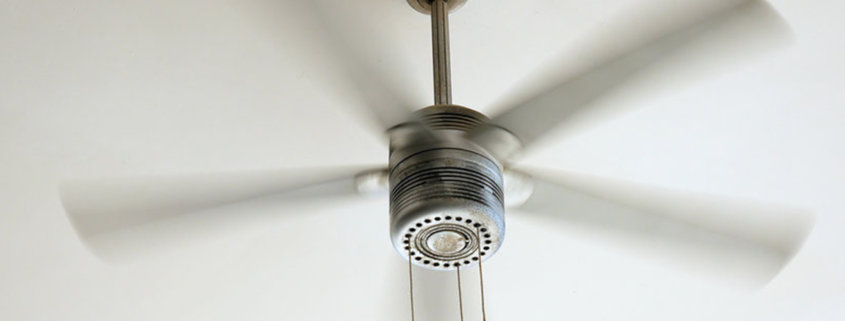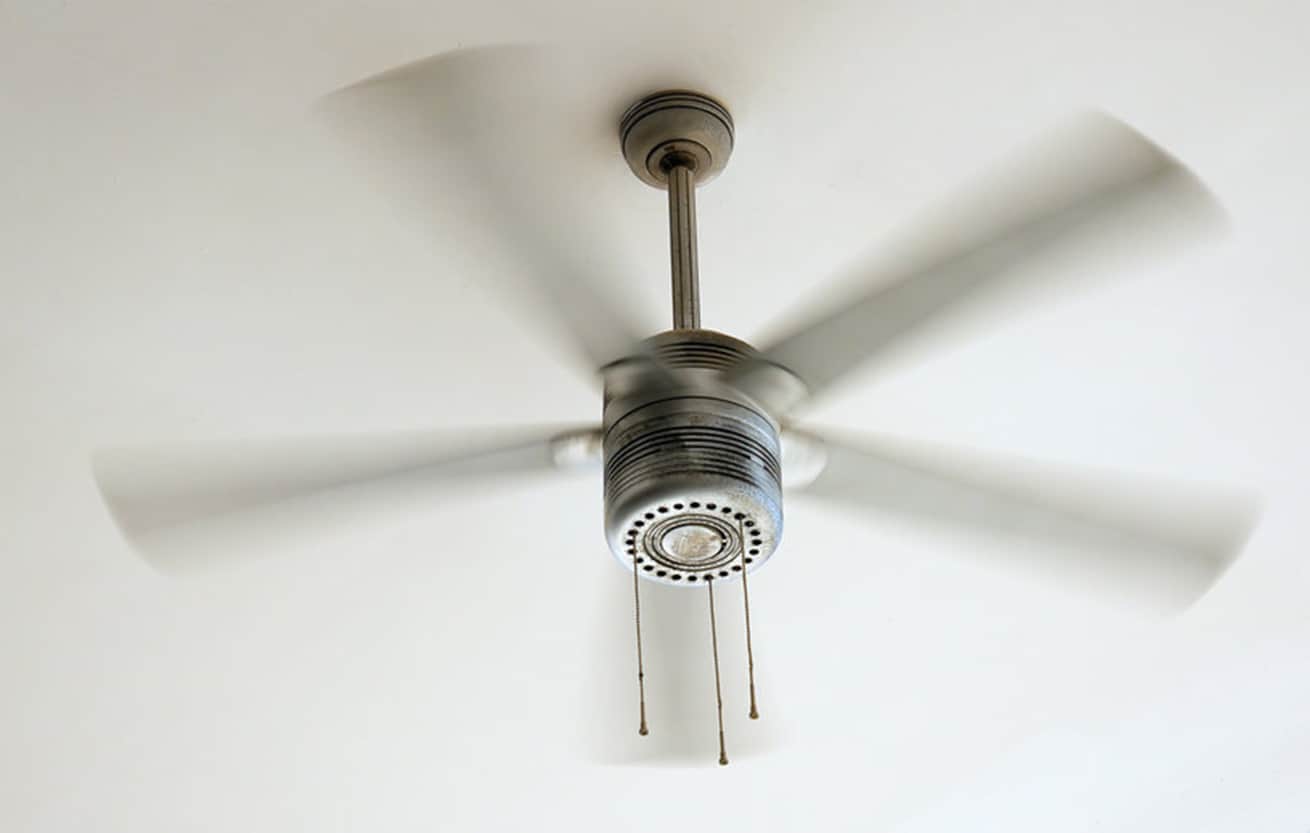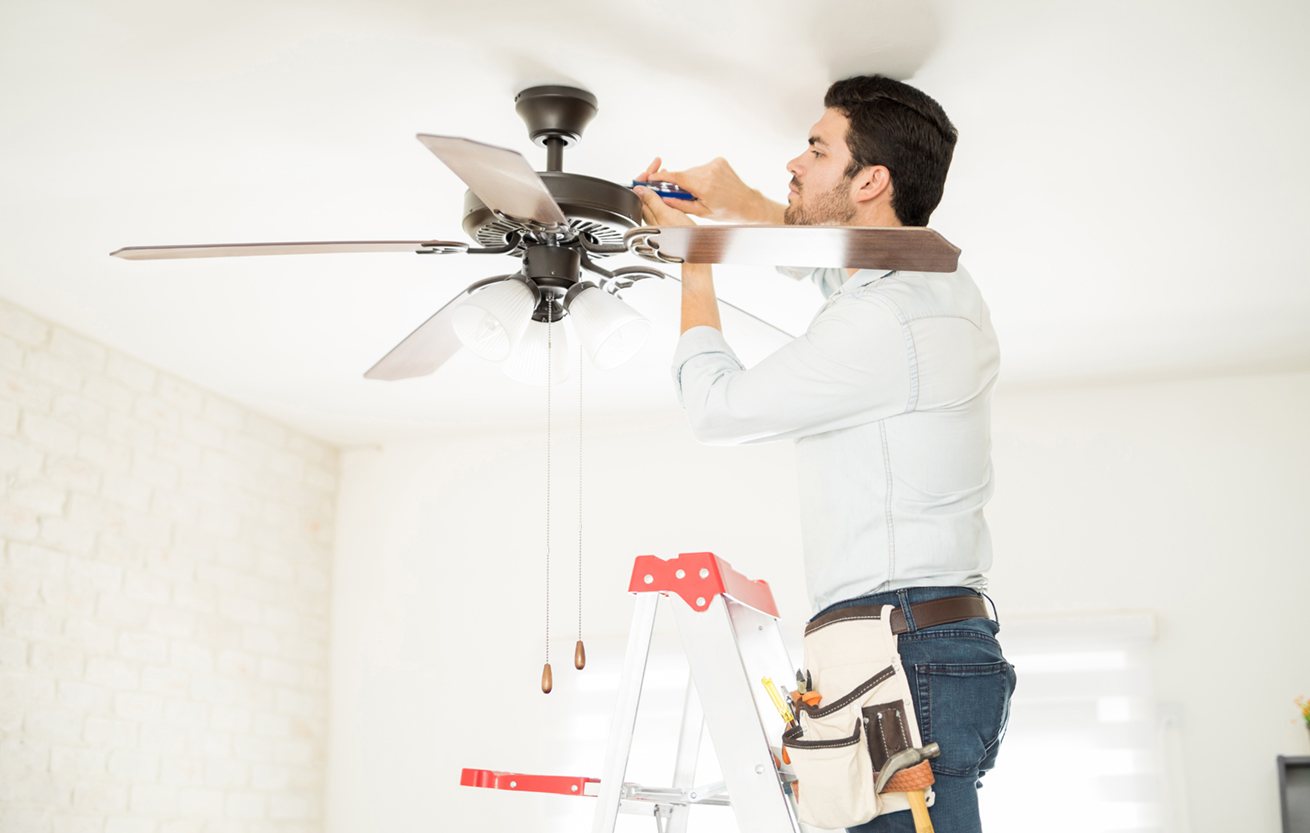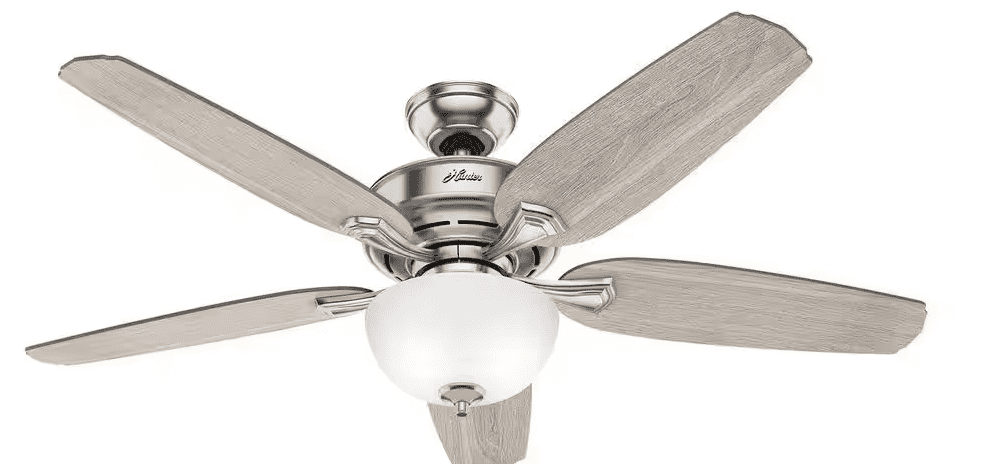SOLVED! The Mystery of Ceiling Fan Direction Plus Best Inexpensive Ceiling Fan
Years ago, a reader sent in her handy tip, passed along from her husband, a heating and air conditioning specialist: In the winter, make your ceiling fans spin counterclockwise. Or was that clockwise? To be honest, it totally slipped my mind as soon as I shared it with my readers.
But I do recall the barrage of responses I received. Some thanked me for printing the correct answer to the burning question, while others told me I was wrong and it should spin in the opposite direction. But why?! Who makes up these rules? Does anyone know for certain?
Today, I have the answers.
The science
To make this easy, first, we need to understand the principle behind moving air. You may be familiar with the terms “wind chill” and “heat index.” These terms indicate what the temperature feels like, not what it is in reality on the thermometer.
Ceiling fans cannot reduce the temperature inside your home in the summer. Ceiling fans cannot cool the room! But they can certainly make you feel as if that is the case. Ditto for making you feel warmer in the winter. A ceiling fan that is set properly can make you feel as if the temperature is either cooler or warmer.
Knowing how to use fans in summer to send a rush of air downward, cooling your skin and making it feel up to eight degrees cooler than it is, lowers the chill factor.
Knowing how to use fans to circulate the hot air in winter is equally important because you will be able to increase your body’s heat index or how warm you feel, while creating less actual heat and keeping the heating bills down.
Forward or reverse?!
The direction in which a ceiling fan should spin in the summer and in the winter depends on the type of fan you have and at which angle the fan blades have been set by the manufacturer (or you, if you have altered them). Even so, this is not difficult.
In fact, once you know a simple trick and way to test how your ceiling fan is designed, ceiling fan direction will cease being a mystery.
First, look to see if there is a switch marked “Forward” and “Reverse.” If so, and you are sure the blades are angled properly, typically (but not in all cases) you want the fan to spin Forward during the summer and Reverse in the winter.
If set on Forward the fan blows air downward onto the occupants of the room, it makes them feel cooler by increasing the evaporative cooling on our skin. Most people know sweating is a process your body uses to cool down. Your body is always trying to maintain an even body temperature. Sweating reduces body heat through evaporative cooling.
During the winter, you do not want the fan to blow directly on you, which would increase your wind chill factor and make you feel even cooler than the thermostat is set to. You want to set the fan to “Reverse” so that it blows air upward to the ceiling, forcing the hot air trapped up there to come down to warm the occupants of the room. And you want to set it on a slow speed to make sure you are not creating a draft.
Is Forward clockwise or counterclockwise?
There is no definitive answer because it depends on your specific fan, where it was manufactured, and the angle at which the blades are set. There are no universal laws regulating ceiling fan manufacturers!
The solution
Are you all mixed up now? Not to worry. Here’s a super easy way to remember which way to set a ceiling fan for the season.
Step 1
Set the fan to High so it is spinning at its top speed, and stand under it. Do you feel the air blowing down on you? Then that is your “Forward” odirection and the setting you want for summer. Make a note. Set it on High speed for the greatest cooling impact.
Step 2
Now switch the fan to go in the other direction. If you do not feel air blowing down on you, that means it’s blowing upward. That is your “Reverse” or winter direction. This is the direction you want for winter. To use the ceiling fan in Reverse, set it on Slow speed to make sure you are pulling the warm air down from the ceiling and into the room, but not creating a draft.
Let’s recap …
Ceiling fans are good at following orders. But you must give them good instructions:
- the correct ceiling fan direction
- the right speed
- turn it on when you’re in the room
- turn the fan off when you leave because you’re wasting electricity when no one is in the rooms to feel cooled—or warmed, depending on the season.
Be diligent to make sure your ceiling fan is working for you, and you could save 15% to 40% on your summer air conditioning costs and reduce next winter’s heating bills, too.
Best Inexpensive Ceiling Fan
We have five Hunter ceiling fans in our home—3 indoors and 2 outdoors. These fans are spectacular. They run silently, almost continuously, year-round. They don’t wobble at all!
Available in a number of finishes. Hunter offers many style choices. Some come with lights, others with remote control. All things considered, Hunter Ceiling Fans are Team EC’s pick for overall Best Inexpensive.
EverydayCheapskate is reader-supported. We participate in the Amazon Services LLC Associates Program, an affiliate advertising program designed to provide a means for publishers to earn fees by linking to Amazon.com and other affiliated sites. Thanks!



















I see it super simply…either you want to feel the air hitting you (for summer) or you don’t want to feel the air hitting you (for winter).
You got it!
In NH daylight savings tells me to set the clocks ahead 1 hour in the Spring, so “Spring” forward; therefore, set the fan “forward.” In the Fall daylight savings says to set clocks back 1 hour so “Fall back”; therefore, set fans backwards (reverse).
That may be correct for your specific fan. But again, always test to make sure you are feeling the downward air in the summer, not feeling downward air in winter.
Thank you for this clear explanation. I could write a book about the dynamics of ceiling fans in a couple’s bedroom.
Sleeping patterns and habits have so dramatically changed and contrasted over the years in my house that we are building a retirement home for ourselves with 2 primary bedrooms (formerly called “master bedrooms”) so we can each rest comfortably. My husband wants everything 20 degrees warmer than me. Need I say more?!
Thanks, Mary. I’ve witnessed quite a few arguments about this, and I think in the future I’ll refer folks to this article to save time.
Since heat rises it seems odd to want the ceiling fan blowing that heat back down on you
You would do that in the winter when you do want the warm air down at floor level.
My girlfriend used to nanny in an old house, and the owners complained the addition to the kitchen was always colder that’s when I said use the fan to blow the heat downward in it equalized with the rest of the house they were very happy it worked out
Thanks, Mary. I’ve witnessed quite a few arguments about this, and I think in the future I’ll refer folks to this article to save time. 🙂
Keep it off in the winter. No matter what season it is, moving air across the skin creates a cooling effect.
Bingo!
Thank you Mary! For years I have been uncertain about this question. What I saw as counter-clockwise my husband saw as clockwise so there have been a few disagreements!
Happy to be of service!
Thank you, Mary. I couldn’t understand what the “reverse” setting could possibly be used for.
FYI — Fans don’t cool air. They cool people. If no one is in the room, turn the fan off. The fan won’t cool the room unless it’s drawing in cooler air from somewhere else. Even after telling family members this, they refuse to believe it, and I’m always finding fans on in empty rooms. Sigh.